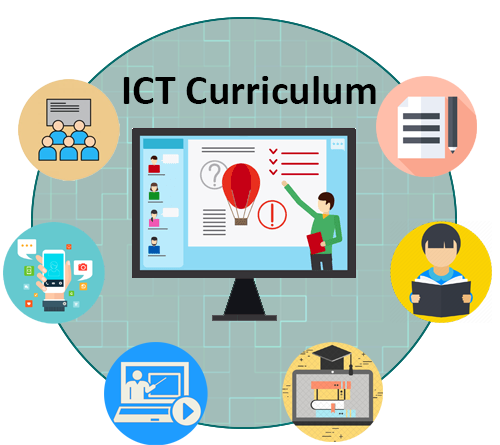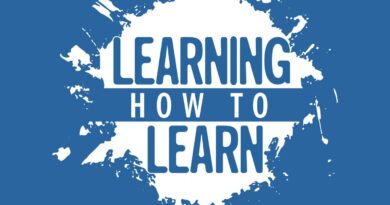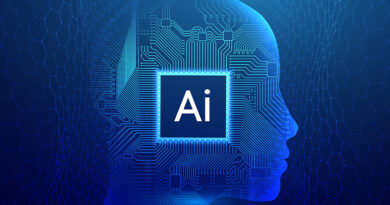The Power of ICT Integration in Curriculum Design
Revolutionizing Education: The Power of ICT Integration in Curriculum Design
Introduction: The Rise of Technology in Education
As technology continues to advance at an exponential rate, it has become increasingly apparent that education needs to adapt in order to keep up. This is where the concept of ICT (Information and Communication Technology) integration in curriculum design comes into play. Essentially, ICT integration is the process of incorporating various forms of technology – such as computers, tablets, interactive whiteboards, and digital resources – into the classroom environment as a means of enhancing teaching and learning.
The Importance of ICT Integration in Education
The integration of technology has become an essential part of modern education systems for several reasons. First and foremost, it helps to make learning more interactive and engaging by allowing students to explore concepts through multimedia presentations, educational games, simulations, etc. This improves retention rates because students are not simply listening or reading passively; they are actively participating in their own learning. Secondly, ICT integration provides students with 21st-century skills that will be useful both in furthering their education and when they enter the workforce.
With so many jobs now requiring computer skills or knowledge about how to use technological tools effectively, it’s important for students to be exposed early on so that they can develop these skills over time. Plus, knowing how to use technology effectively will make them more competitive candidates when applying for jobs later on.
Benefits of ICT Integration in Curriculum Design
Engaging and Motivating Students Through Technology
Integrating technology into the classroom can greatly enhance student engagement and motivation. With the use of interactive tools such as educational apps, multimedia presentations, and online discussions, students are more likely to take an active role in their own learning. Teachers can also incorporate gamification techniques into their lessons by using educational games that make learning more fun and engaging.
This can help keep students interested and motivated to learn. In addition, technology allows for personalized learning experiences by tailoring instruction to each student’s needs.
Adaptive software programs can adjust in real-time based on a student’s progress, providing appropriate content and challenges for each individual. This personalized approach helps students stay engaged with the material and achieve better learning outcomes.
Improving Learning Outcomes and Academic Performance
The integration of ICT in curriculum design has been shown to improve overall academic performance and learning outcomes. By providing students with access to technology-rich resources such as digital textbooks, online libraries, simulations, visual aids, etc., teachers can present information in a variety of ways that cater to different learning styles. This leads to better retention of concepts and increased understanding.
Moreover, through technology-enabled collaborative activities such as online discussions or group projects using shared documents or presentations, students learn how to work together effectively while enhancing critical thinking skills. As they work through these activities together they gain new insights from their peers which further helps them understand complex concepts.
Developing 21st Century Skills Necessary for the Workforce
Integrating ICT into curriculum design develops essential 21st-century skills that are necessary for success in the workforce. These skills go beyond traditional literacy abilities like reading comprehension or writing proficiency; they include digital literacy competencies like creating multimedia presentations or coding software programs required by employers today.
Using technology in the classroom helps students to practice these skills and become comfortable with them before they enter the workforce. By integrating technology into the curriculum, teachers can help ensure that their students are prepared for success in a rapidly evolving digital world.
Challenges to ICT Integration in Curriculum Design
Limited access to technology and resources
One of the biggest challenges facing many schools today is limited access to technology and resources. Many schools simply do not have the necessary equipment or software to properly integrate ICT into their curriculum.
This can be due to a number of factors, including budget constraints, outdated infrastructure, or simply a lack of awareness about the importance of incorporating technology into teaching practices. Without adequate technology and resources, teachers may struggle to engage students in meaningful ways that utilize digital tools.
For example, an English teacher might want students to create digital stories using multimedia elements such as images and video. However, if the school does not have enough computers or tablets for every student, this project may be difficult or impossible to complete.
Resistance to change from teachers and administrators
Another major challenge facing schools when it comes to integrating ICT into curriculum design is resistance from teachers and administrators. Some educators may feel uncomfortable with new technologies or may not see the value in incorporating them into their teaching practices.
This resistance can be challenging for school leaders who are trying to modernize their schools and prepare students for the 21st century job market. Teachers who are resistant may need additional training and support in order to become comfortable using new technologies in their classrooms.
Administrators can help address this challenge by providing professional development opportunities that focus on ICT integration best practices. By showing teachers how these tools can improve student engagement and learning outcomes, they may be more willing to embrace these changes over time.
Lack of training and support for teachers
Even if teachers are willing to embrace new technologies, they must receive adequate training and support in order to use them effectively. Unfortunately, many schools do not provide sufficient training opportunities for educators on how best to incorporate technology into teaching practices. Without proper training, teachers may struggle to use digital tools effectively or may not know how to properly integrate them into their curriculum.
This can lead to frustration for both teachers and students, as lessons may not be as effective or engaging as they could be. School administrators can address this challenge by providing ongoing training opportunities for teachers on ICT integration best practices.
This might include workshops, online courses, or even peer-to-peer mentoring programs that encourage collaboration and sharing among teachers. By investing in teacher training and support, schools can help ensure that ICT integration is truly effective and beneficial for students.
Strategies for Effective ICT Integration in Curriculum Design
Aligning technology with learning objectives
Simply adding technology to a lesson plan without considering how it aligns with learning objectives is unlikely to produce positive results. Instead, educators must carefully assess how using technology will enhance student understanding of a given topic and then choose the most appropriate tools accordingly. For example, if an objective is for students to understand the impact of climate change on different ecosystems, an interactive simulation that lets students explore different scenarios and observe changes over time would be more effective than simply watching a video or reading about the topic.
Providing professional development opportunities for teachers
Even the most tech-savvy teachers will need ongoing training and development to effectively integrate new technologies into their teaching practices. Professional development opportunities should include both technical training on specific software or hardware as well as discussions about pedagogy and best practices for integrating technology into lesson plans. Teachers should also have access to ongoing support from instructional technologists who can troubleshoot issues and suggest new tools or strategies.
Encouraging collaboration between teachers, students, and parents
Successful integration of technology requires more than just individual effort; it requires collaboration between all stakeholders involved in education. By involving students in the selection process of technological tools used in class, they become active participants in their learning journey instead of passive listeners. This approach will not only improve student engagement but also drive better outcomes because they are invested in their own success.
Similarly, parents should be engaged by providing them with online access to their children’s grades and homework assignments so they can monitor progress at home while understanding how new technologies are being used in classrooms. Sharing resources among colleagues is essential for optimizing the benefits of ICT integration into curriculum design – this way everyone can learn from each other’s experiences rather than reinventing the wheel themselves every time.
Examples of Successful ICT Integration in Curriculum Design
Project-based learning using digital tools
Project-based learning (PBL) has been around for years, but in the current age of technology, PBL has become even more engaging and interactive. With digital tools such as Google Docs, students can collaborate with each other on group projects in real time, no matter where they are.
Teachers can also use project management software like Trello to keep track of their students’ progress and provide feedback. In a PBL classroom that is integrated with ICT, teachers can design projects that encourage students to research and create content in various formats such as audio, video or multimedia presentations.
For example, students could use Audacity to record a podcast or iMovie to create an educational video. This not only helps develop their research and analytical skills but also allows them to express themselves creatively while still maintaining academic rigor.
Flipped classroom approach using online resources
The Flipped Classroom Approach is another successful ICT integration in Curriculum design where students view lectures or instructional videos at home before coming to class. Then during class time they work on exercises and assignments related to the topic covered in the video. This approach encourages active participation from students as they are more than just passive learners absorbing information; they apply what they have learned through hands-on activities.
Online resources like Khan Academy provide a wide range of videos for different subjects that teachers can assign as homework. Some schools have already implemented this approach with great success: after flipping their classrooms teachers report improved student engagement and academic performance.
Personalized learning through adaptive software
Personalized Learning has become incredibly popular within education over the recent years because it takes into account individual student needs instead of trying to teach everyone exactly the same way. Adaptive software is one way this can be achieved through technology – it tracks individual progress and recommends learning materials based on each student’s strengths and weaknesses.
For example, adaptive software like Quizlet can recommend specific study material to students depending on their performance. The tool adapts to the student’s previous answers and presents questions that focus on their weaker areas.
This way, students can improve their understanding of a subject matter in a personalized way. Alternatively, Edmentum provides teachers with an entire suite of online resources that include assessments, activities and games that are tailored to the individual student’s needs, making it easier for teachers to create differentiated instruction plans.
Future Directions for ICT Integration in Curriculum Design
Emphasis on Digital Citizenship and Online Safety Education
As technology continues to advance, it is becoming increasingly important to educate students on digital citizenship and online safety. With the rise of social media and other online platforms, students are more vulnerable than ever to cyberbullying, identity theft, and other digital threats.
By integrating these topics into the curriculum, we can help equip our students with the skills they need to navigate the online world safely and responsibly. One way to incorporate this education into ICT integration is through lessons on internet privacy and security.
Students can learn about topics such as creating strong passwords, protecting personal information online, and recognizing potential scams or phishing attempts. Additionally, lessons on cyberbullying prevention can help students understand how to identify bullying behavior online and how to respond appropriately if they or someone they know is being bullied.
Increased Use of Virtual Reality and Augmented Reality Technologies
Virtual reality (VR) and augmented reality (AR) technologies have been gaining popularity in recent years as powerful tools for education. VR provides a fully immersive learning environment that allows students to explore complex concepts in a hands-on way that was previously impossible. AR overlays digital information onto the real world, allowing students to interact with virtual objects in their physical surroundings.
These technologies offer endless possibilities for ICT integration in curriculum design. For example, science classes could use VR simulations of complex biological processes like photosynthesis or cell division.
History classes could use AR overlays to bring historical events like the Civil War or World War II to life right in front of their eyes. The possibilities are endless – as technology continues to advance, we can expect even more exciting developments in this area.
Integration of Artificial Intelligence into Teaching Practices
Artificial intelligence (AI) has already made its mark on many sectors of society – and education is no exception. In fact, AI has the potential to revolutionize the way we teach and learn.
By integrating AI tools into teaching practices, we can create personalized learning experiences that cater to each student’s unique needs and abilities. One example of this is adaptive learning software, which uses algorithms to adapt the curriculum to each student’s progress, providing individualized support and feedback along the way.
Additionally, chatbots can provide 24/7 support for students who need help with homework or other assignments. As AI continues to develop, we can expect even more innovative applications in education that will help us create a brighter future for our students.
Conclusion
Summary of Key Points Discussed in the Outline
In this article, we explored the benefits and challenges of integrating ICT into curriculum design. We discussed how technology can enhance student engagement, improve learning outcomes, and develop 21st-century skills.
However, we also addressed the challenges in implementing ICT integration such as limited access to technology and resistance to change from teachers and administrators. We then provided strategies for effective ICT integration including aligning technology with learning objectives, providing professional development opportunities for teachers, and encouraging collaboration among stakeholders.
We also highlighted successful examples of ICT integration in curriculum design such as project-based learning using digital tools, flipped classroom approach using online resources, and personalized learning through adaptive software. We looked at future directions for ICT integration which include an emphasis on digital citizenship education and increased use of virtual reality and augmented reality technologies along with the integration of artificial intelligence into teaching practices.
Final Thoughts on the Importance of Integrating Technology into Curriculum Design
In today’s world where technology is integral to almost every aspect of our lives, it is imperative that we prepare our students to thrive in a technologically advanced society. By integrating ICT into curriculum design, we ensure that our students are equipped with the necessary skills to succeed academically as well as professionally.
The benefits of ICT integration go beyond just improved academic performance; it also helps develop critical thinking skills by providing opportunities for exploration and collaboration among students from different backgrounds. Furthermore, by incorporating digital citizenship education into our curriculum design along with an emphasis on online safety education we can protect our students from various online threats while preparing them for a digitally connected world.
Integrating technology into curriculum design is not just important but essential in today’s digital age. By doing so we can create a more inclusive educational environment that prepares students for success both inside and outside the classroom.



